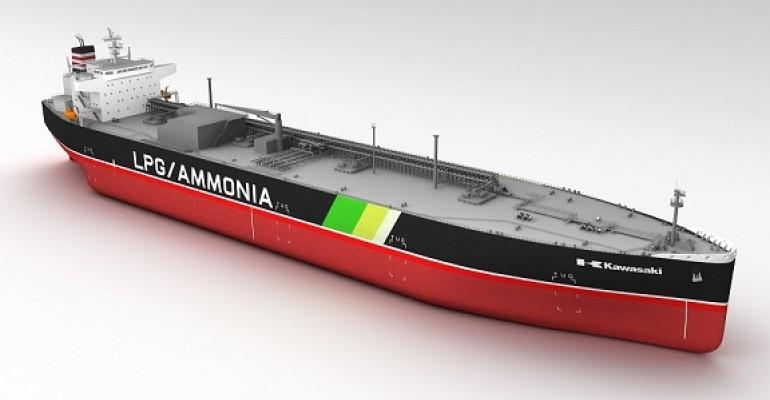Rystad estimates that traded volumes in clean ammonia will reach 76 million tonnes by the mid-2030s, a four-fold increase on 2020 volumes. By 2050, ammonia exports could reach more than 120 million tonnes a year, the firm said. Much of it will come from Africa and North America.
Using ammonia as a hydrogen energy carrier has distinct advantages, according to experts. It enables larger amounts of energy to be shipped longer distances in less space. It is more energy-efficient to ship by sea than hydrogen, which has a boiling point of -253°C. And there is already a global trade in ammonia with a fleet of dedicated tankers and reception terminals.
However, developments are underway for liquefied hydrogen carriers spearheaded by Japanese owners and shipyards.
When the ammonia is delivered, it can then be split back in hydrogen and nitrogen by ammonia cracking. The hydrogen can then be used as a climate-neutral energy source.

Japan and Germany have already adapted their national hydrogen strategies in the expectation of its greater role in working towards net-zero emission targets. Despite the likely scale of export projects and uncertainties surrounding future trade dynamics, Rystad suggested that some project developers could decide to pursue dual strategies of partially converting hydrogen to ammonia and/or looking at different transport options.
Head of Hydrogen Research at Rystad Energy, Minh Khoi Le, commented: “Hydrogen penetration is moving quickly and globally, entering new geographies and outpacing market expectations. With the ammonia trade booming, there is an urgent need to leverage existing assets to their fullest potential. Converting LNG terminals could be a good solution, not only optimising current infrastructure but also spurring a re-evaluation of strategies that can cope with the scale of the expected market expansion.”
Copyright © 2024. All rights reserved. Seatrade, a trading name of Informa Markets (UK) Limited.
Add Seatrade Maritime News to your Google News feed.  |

